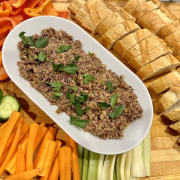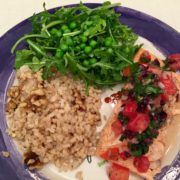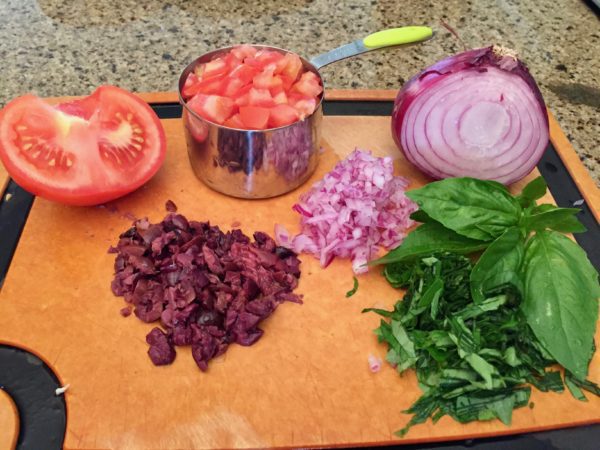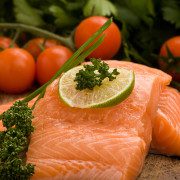Nutrient Dense Olive Tapenade
Originating in the Mediterranean tapenade is made with olives, anchovies, capers, garlic and herbs – nutrient density at its best!
Olives are rich essential minerals calcium, magnesium, iron, potassium, zin and copper, polyphenols and omega-9 fatty acids that can help benefit heart, brain and mood.
Protein-packed anchovies are rich in omega-3 fatty acids and micronutrients – selenium, calcium, magnesium, vitamins B12, B6, A, K and more.Combined with garlic and herbs this is nutrient density at it’s best.
Use black olives or green olives only. Mix and match herbs. Use sun-dried tomatoes or not. You an also skip the anchovy, but it will give it a boost of flavor and nutrients.
Serving options
- Make a “tapenade board” with veggie crudites and sliced quality bread for a special occasion.
- Spread on cooked chicken breasts or roasted fish fillets
- Use in wraps
- Add as a generous dollop to green salads
- Swirl a spoonful into soup
- Use as a snack with veggies and rice cakes or seed crackers
- Add it to avocado toast
- 1/4 cup extra-virgin olive oil
- 1 cup kalamata olives pitted
- 1 cup small green olives pitted
- 1/4 cup sun-dried tomatoes in olive oil drained (optional)
- 1 tablespoon capers
- 1 garlic clove
- 1 anchovy fillet
- 2 tablespoon chopped fresh basil leaves
- 2 tablespoon chopped fresh flat-leaf parsley leaves
- 1 tablespoon chopped fresh oregano or thyme leaves
- 2 - 4 tablespoons filtered water optional
- in a food processor, place olive oil and 1 cup kalamata olives. Using the pulse button, process until coarsely chopped and well blended.
- Add 1/2 cup green olives, and pulse until blended, add remaining 1/2 cup and blend. If it is too thick, add 1 tablespoon water a time as you continue to pulse.
- Add remaining ingredients and pulse slowly
- Make it chunky or smooth, as you prefer.
- Refrigerate in a covered container. Use as needed.
To prepare ahead:
Tapenade will keep up to 1 week, refrigerated, in a covered container.
Modified from
Epicurious: Black and Green Olive Tapenade




